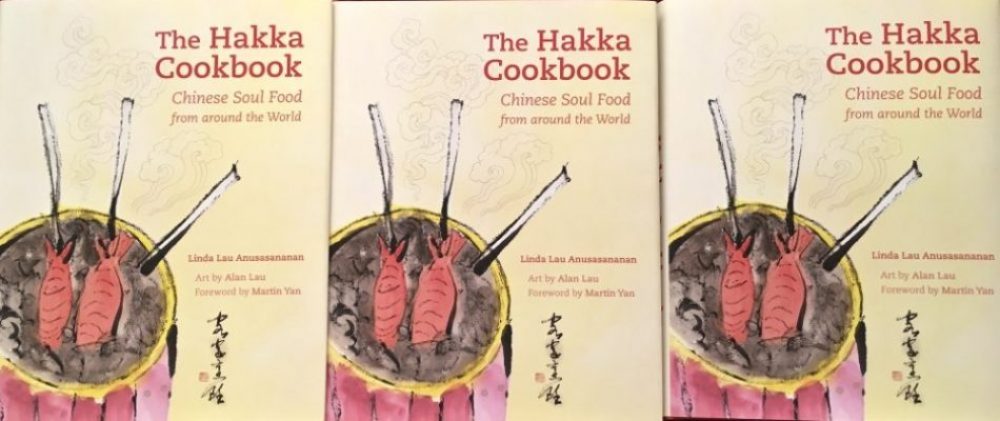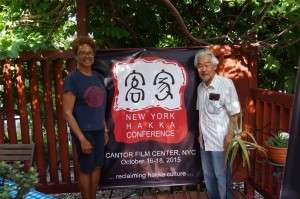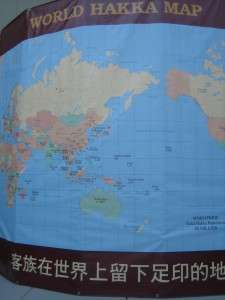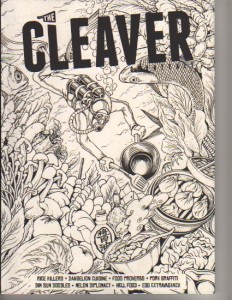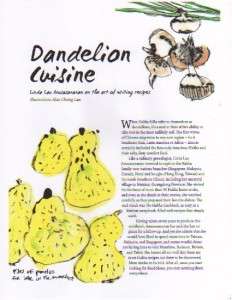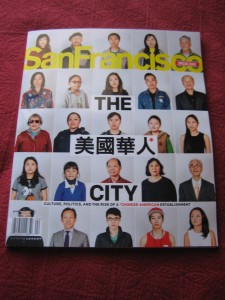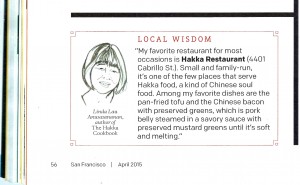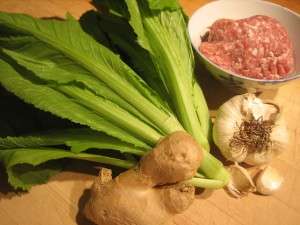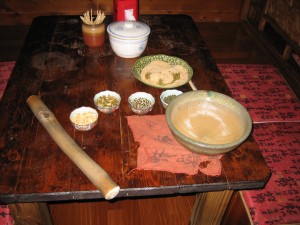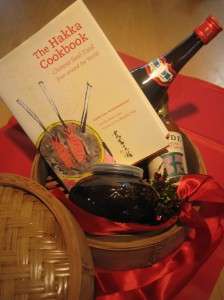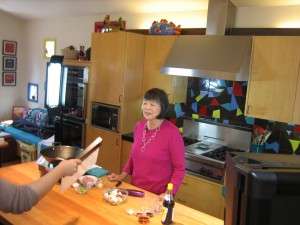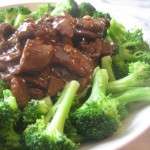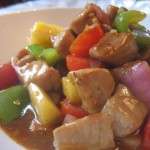A couple of years ago, my high school friend Karen suggested we organize a cooking party around The Hakka Cookbook. We had such a good time she wanted to repeat it again. I suggested we try different recipes this time.
I planned a menu with six recipes trying to choose ones that would not suffer when cooked in a larger quantity. I suggested each cook claim one recipe and bring it to the party ready-to-eat or completely prepped and ready to cook. In this organized potluck, the work and expenses are shared which makes it much less stressful for the host.
We numbered thirteen. The men opted out of the cooking and were happy to drink beer and socialize outside. The six women, longtime childhood friends, gathered in the kitchen to catch up, laugh, and get the meal on the table. Since we served two dishes at a time, usually only two people were at the stove, while others watched and learned.
Our crew cooked and ate the meal at a leisurely pace in three courses, serving two dishes at a time, buffet style. We spent the whole afternoon cooking, talking, and eating. It’s an easy party plan to duplicate for your own Hakka cooking party. This party also pushes you to explore the cookbook more deeply. Enjoy—cook, learn, and eat!
First courses:
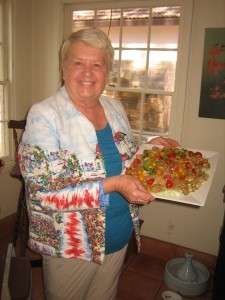 Soy Glazed Chicken Morsels (p. 199). Ruby doubled the recipe, cooking it in two batches at home, shortly before the party. She served the chicken at room temperature over a bed of lettuce. The chicken can also be served hot.
Soy Glazed Chicken Morsels (p. 199). Ruby doubled the recipe, cooking it in two batches at home, shortly before the party. She served the chicken at room temperature over a bed of lettuce. The chicken can also be served hot.
Mustard Green and Pork Soup (p. 26) Nancy brought a double batch of the broth with the pork. Shortly before serving, she reheated the broth and added the cut-up mustard greens.
Second courses: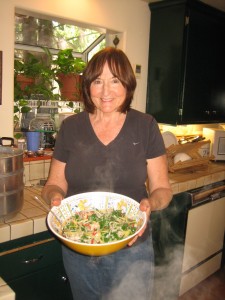
Poached Shrimp and Ginger Broth (p. 103) Phyllis brought a double portion of shrimp and seasonings. Once the water boiled, it only took minutes to cook the shrimp.
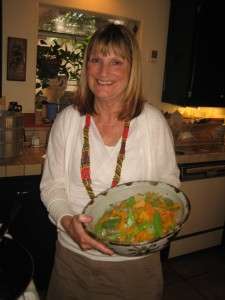
Ginger Scented Squash and Peas (p. 52) Barbara pan-steamed a double portion of this colorful vegetable medley in my 14-inch wok. She used shallots instead of lily bulbs.
Third courses: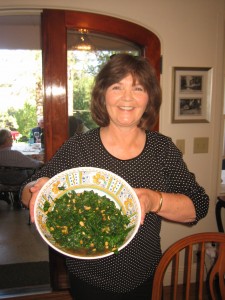
Steamed Black Bean Pork (p. 165) The day before I cooked a double batch of this recipe and chilled it overnight. The next day, I reheated the two bowls in my stacked steamer.
Spinach and Peanuts (p. 56) Mel stir-fried two double batches of spinach just before serving.
Hot Rice
Potluck Desserts
Wine, Beer, Hot Tea, and Sparkling Wine and Water
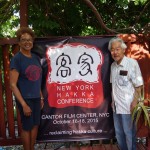 I am putting together a slide show for The New York Hakka Conference. My subject is Hakka Cuisine so I plan to show photos of Hakka food and share stories I encountered on my global journey to research The Hakka Cookbook. Register for the conference and learn more about Hakka history, identity, and food. Following is a tentative schedule of events:
I am putting together a slide show for The New York Hakka Conference. My subject is Hakka Cuisine so I plan to show photos of Hakka food and share stories I encountered on my global journey to research The Hakka Cookbook. Register for the conference and learn more about Hakka history, identity, and food. Following is a tentative schedule of events: